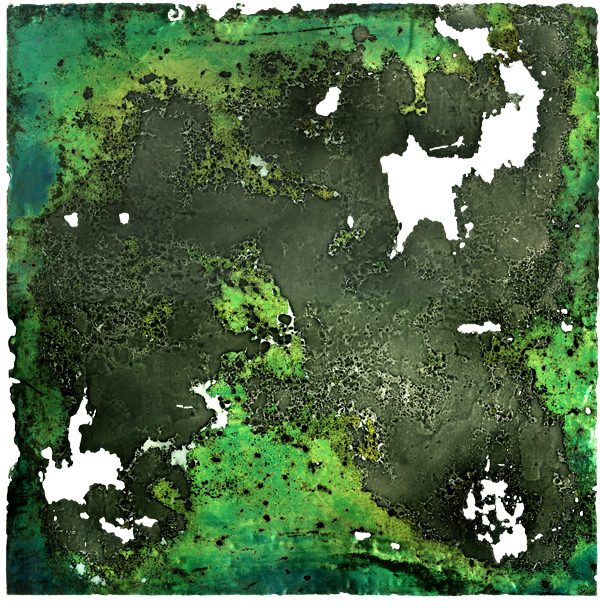Prussian Blue
Concrete and oil on wood, etchings, zinc, 2012
What is the material of memory? What is its texture? What is the palpable feeling of touching it?
This work is the outcome of a research trip to the Nazi’s death camps in Poland. In Majdanek’s gas chambers the walls are covered with horrendously beautiful stains, a reaction between the chemistry of the wall and the deadly Zyklon B gas used by the Nazis to murder their victims. Those stains, Prussian blue coloured, are an index of the acts that took place in the gas chambers.
I recreated the Zyklon B stains in the gas chambers, a representation getting farther away from my “real” experience with its every stage. My choice of materials was of the most common and used materials of memory-work, giving those materials different meaning and use. First I painted the stains, using concrete as a paint with a brush. My paintings had a very rough texture, while the original walls are smooth. Second, I copied the painting’s texture to metal plauqes. I burned the metal in acid over and over again, printing it at every stage. Those prints are documentation for the decay process of the plate; you can say the decay process of memory. As the plate continued to burn in acid, the acid ate the metal, and holes started to form, Voids. Hence, where the texture of the concrete was heavier and bolder, the metal was gone. The perforated plaque is my memorial, my voided memory of my Holocaust experience. It creates a juxtaposition between the aesthetic value of the work and its content, employing the beauty of its construction – its materials, its ineluctable meaning and decay.








